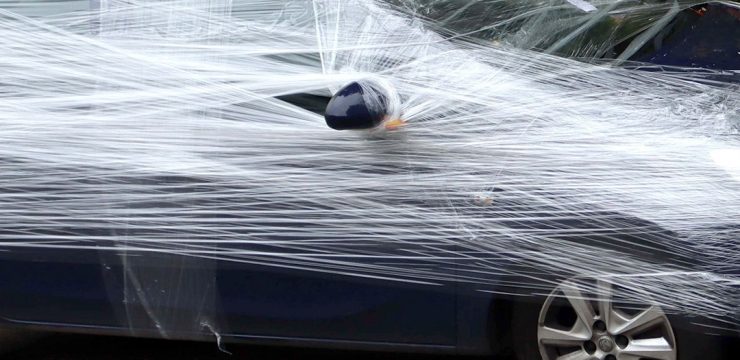When you hear the word “portholes,” you probably think of those small round windows on ships or airplanes. But did you know portholes are also used on cows? It might sound bizarre, but this is a reality in farming and animal science. These portholes, also known as fistulas or cannulas, are openings that provide direct access to a cow’s stomach, and they have revolutionized agricultural research. So, what are these cow portholes for, why are they used, and how do people feel about them? Let’s break it down.

What Exactly Are Portholes in Cows?
Portholes in cows, technically known as cannulas or fistulas, are surgically made openings that allow farmers and researchers to access a cow’s stomach. The procedure involves creating a hole on the side of the cow that leads to the rumen, which is the largest of the cow’s four stomachs. A plastic or rubber ring is placed around this opening to keep it accessible for extended periods.
For many people unfamiliar with agriculture, this might sound alarming. However, it’s a long-established practice in veterinary and agricultural science. Remarkably, cows that undergo this procedure live normal, healthy lives. The porthole provides researchers a way to study digestion without repeatedly operating on or sedating the animal, making it a more humane approach to scientific study.
The History of Cow Fistulation
The practice of cow fistulation started in the 1920s. Researchers needed a more effective way to study the complex digestive process of cows, which have four different stomach compartments. Previous methods were invasive and stressful, often requiring multiple surgeries.
With the introduction of portholes, scientists could collect samples of partially digested food, gases, and microbes directly from the rumen. This approach drastically reduced the need for repeated surgeries, making the research process less stressful for the cows. Since then, portholes have been seen as a revolutionary tool for understanding ruminant digestion, ultimately leading to improvements in both animal health and farming practices.
Why Are Portholes Used on Cows?
You may wonder why anyone would need direct access to a cow’s stomach. The answer lies in the unique way cows digest their food and their critical role in the global food supply. Cows are ruminants, which means they can break down tough plant materials like grass and turn them into essential nutrients. Studying this process is key to improving farming efficiency and ensuring the health of livestock.
Portholes allow scientists to observe and analyze what’s going on inside a cow’s rumen, including how different types of feed are being digested. By collecting and studying these samples, researchers can optimize cow diets to promote better growth, improve milk production, and reduce the environmental impact of livestock farming—such as minimizing methane and nitrate emissions.
How Does It Work?
Once the cow has been fitted with a porthole, researchers can open it to access the rumen and collect samples. They monitor how well the cow digests various feeds and observe the population of microbes that assist in this process. This unique access allows researchers to test new feeds and supplements, providing valuable information that benefits the entire livestock industry.
By understanding the digestion process better, scientists can create diets that help cows grow faster, stay healthier, and reduce their environmental footprint. The insights gained from studying the rumen have led to significant advances in animal health and the efficiency of farming practices.
The Benefits of Using Portholes
The use of portholes has transformed the way scientists and farmers understand cow digestion, and it comes with several important benefits:
1. More Efficient Research
Portholes allow continuous study of a cow’s digestion without the need for repeated surgeries, significantly reducing stress for the animals. This makes research more humane and more efficient.
2. Optimized Feeding
Direct access to the rumen means researchers can determine which feeds are digested most effectively. This helps create optimal diets that promote growth and health, ensuring cows are healthy and productive.
3. Reducing Environmental Impact
Livestock farming is a significant source of methane emissions, which contribute to climate change. By using portholes to study digestion, researchers have been able to develop feeds that reduce methane production, promoting more sustainable farming practices.
4. Improved Animal Health
With the ability to access the rumen directly, veterinarians and researchers can quickly detect and address any health issues. This proactive approach enhances the overall health and well-being of the animals.
Ethical Considerations and Public Reaction
The use of cow portholes has sparked ethical debates, especially among animal rights advocates and the general public. The idea of surgically creating a hole in an animal for research can be unsettling for some people.
Supporters of the practice, however, argue that it is both humane and essential for scientific advancement. The procedure is performed under strict veterinary guidelines to ensure the animals’ welfare, and cows with portholes can lead long, healthy lives. Moreover, the knowledge gained from fistulation has led to improved diets and farming methods that benefit millions of cows globally.
Even so, it’s crucial to keep the ethical implications in mind and ensure that this practice is carried out responsibly and humanely. Continuous monitoring and open discussions are needed to address public concerns and ensure ethical standards are maintained.
The Future of Livestock Research
The use of portholes in cows is just one example of how modern science is advancing agricultural practices. As technology evolves, researchers are developing less invasive methods to study and monitor livestock, such as advanced imaging technologies or automated monitoring systems. These future innovations may eventually replace procedures like fistulation.
In addition, as public awareness of agricultural science grows, there will likely be ongoing discussions about the ethics of using animals for research. Transparency and advancements in veterinary care will be key to ensuring that animals used in scientific research are treated well and that their welfare remains a priority.
Conclusion: A Practice That Challenges Perspectives
The concept of portholes in cows may seem strange at first, but it’s an example of scientific innovation designed to improve farming practices. By providing direct access to a cow’s stomach, researchers have made significant progress in understanding livestock health, optimizing feed, and reducing the environmental footprint of agriculture. While ethical concerns are valid, the benefits of this practice have had a long-lasting impact on the way we manage livestock.
The next time you hear about portholes in cows, remember that it’s not just a strange concept—it’s a tool that has shaped the future of farming to benefit both the animals and the planet.





